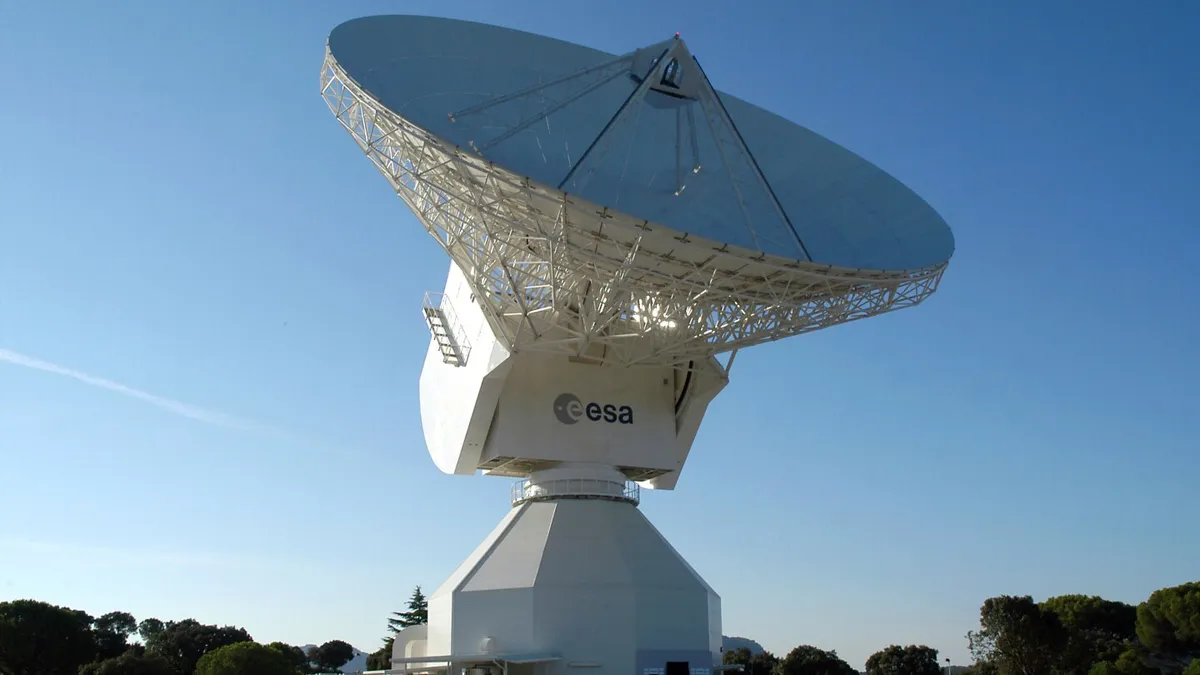
CAPE CANAVERAL, Fla. (AP) — This month, the world will witness a historic event as Strauss’ “Blue Danube” takes to the stars. In honor of the 200th anniversary of the birth of the iconic waltz composer, Johann Strauss II, this classical masterpiece will be transmitted into space. The performance will be conducted by the renowned Vienna Symphony Orchestra, marking a significant milestone in both music and space exploration.
The celestial send-off is slated for May 31 and will be live-streamed with free public screenings in prominent cities such as Vienna, Madrid, and New York. This event not only celebrates Strauss’ legacy but also commemorates the 50th anniversary of the European Space Agency (ESA). The music, although capable of being converted into radio signals in real time, will instead be transmitted from a pre-recorded version captured during the orchestra’s rehearsal the day before, ensuring a flawless performance.
The radio signals carrying “Blue Danube” will travel at the incredible speed of light, approximately 670 million mph (or more than 1 billion kph). This means the music will reach the moon in just 1 ½ seconds, pass Mars in 4 ½ minutes, and continue on to Jupiter in 37 minutes and Neptune in four hours. Within 23 hours, the signals will have traveled as far from Earth as NASA’s Voyager 1, the most distant human-made object at over 15 billion miles (24 billion kilometers) in the vastness of interstellar space.
This isn’t the first time music has been sent into the cosmos. NASA celebrated its 50th anniversary in 2008 by transmitting The Beatles’ “Across the Universe” directly into deep space. More recently, last year, NASA beamed Missy Elliott’s “The Rain (Supa Dupa Fly)” toward Venus. Notably, music has also traveled from another planet to Earth; in 2012, NASA’s Curiosity rover relayed a recording of will.i.am’s “Reach for the Stars” back home.
As we prepare for this monumental event, it’s important to note that Strauss was overlooked during the selection for the Voyager Golden Records nearly 50 years ago. Launched in 1977, the twin Voyagers 1 and 2 each carry a gold-plated copper phonograph record featuring sounds and images of Earth, including 90 minutes of music chosen by a committee led by the late astronomer Carl Sagan. While composers like Bach, Beethoven, and Mozart were included, Strauss’ contributions were sadly omitted.
In a bid to rectify this oversight, the tourist board in Vienna, Strauss’ birthplace, has taken it upon themselves to send “the most famous of all waltzes” to its rightful celestial home. The ESA’s large radio antenna in Spain, part of the agency’s deep-space network, will facilitate this extraordinary transmission, directing the “Blue Danube” towards Voyager 1.
“Music connects us all through time and space in a very particular way,” stated ESA’s director general Josef Aschbacher. He expressed his enthusiasm for collaborating with Strauss II, emphasizing the role of music in inspiring future generations of space scientists and explorers who may one day journey to the stars accompanied by this timeless anthem.
This unique initiative not only honors the legacy of Johann Strauss II but also represents a profound intersection of art and science, showcasing how music transcends boundaries and connects humanity across the cosmos.